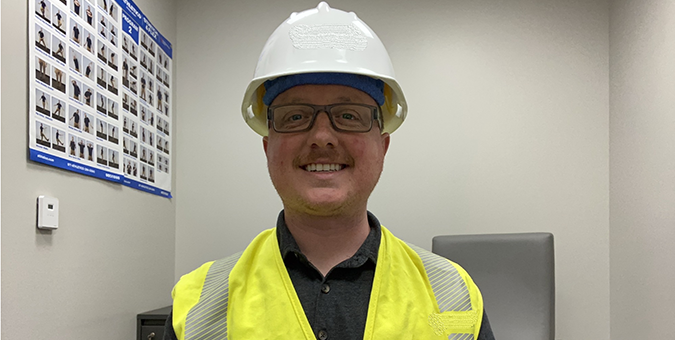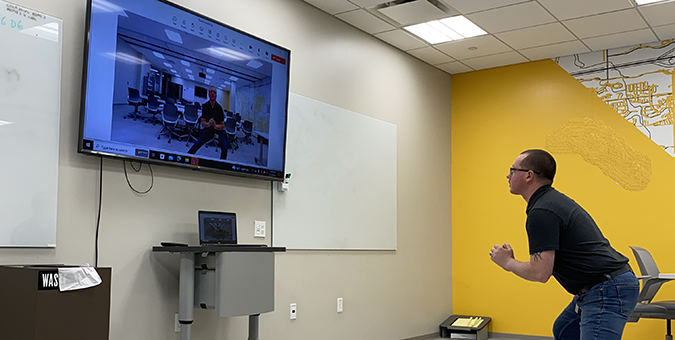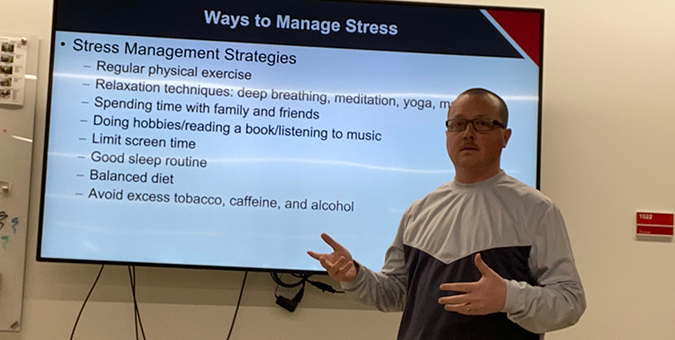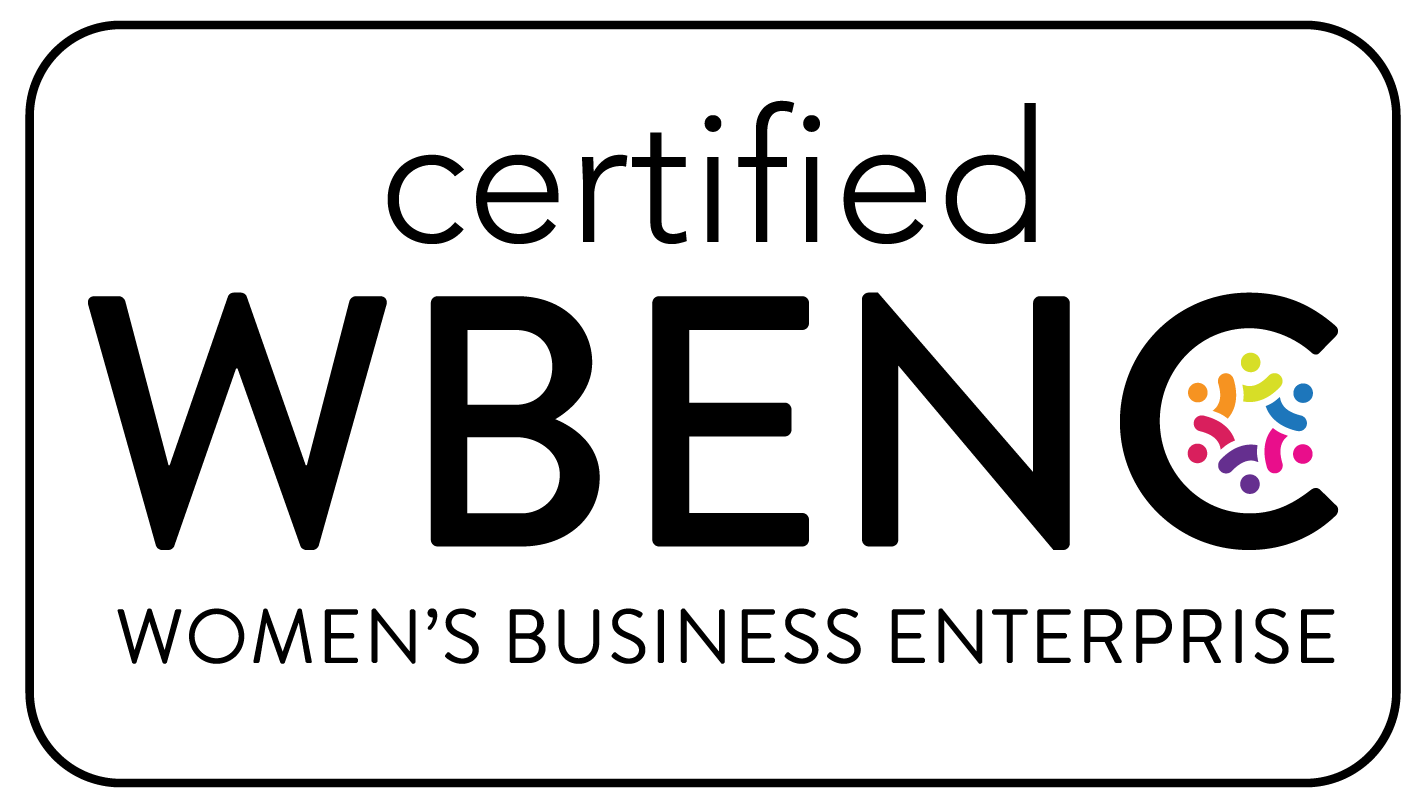Injury Prevention Programs: Practical Insights and Tips

Read CAREonsite’s interview with a Musculoskeletal Intervention Specialist (MIS) to gain insights into what makes effective injury prevention programs.
Author: Joseph Christian
June 5, 2024
In our previous blog, we covered how injury prevention programs that target musculoskeletal injuries can help businesses successfully reduce common workplace injuries.
In this follow-up blog, we will interview CAREonsite Musculoskeletal Intervention Specialist (MIS) Christoffer Lobberecht – who is a certified Athletic Trainer and expert in injury prevention with ten years of experience preventing and treating musculoskeletal injuries in athletic and industrial settings.
Question 1: Tell us about your medical background and how you got into injury prevention.
Christoffer Lobberecht: I am a licensed and certified Athletic Trainer receiving my undergraduate in Athletic Training from Central College in Pella, Iowa. My master’s degree is in Kinesiology/Sports Management from the University of Central Missouri while working as a graduate assistant athletic trainer for Upper Iowa University in Fayette, Iowa. I am CPR/AED for Professional Rescuer certified as well as Red Cross First Aid/CPR/AED instructor certified.
My journey into early intervention and treatment of musculoskeletal injuries started during my university days as a student athletic trainer at Central College. I saw firsthand how preventative care can reduce the number of injuries and decrease the severity and extent of an injury when it does occur.
After graduating, my interest in injury prevention peaked further when I was part of a team that developed proactive exercise programs to help college athletes prevent ACL and shoulder injuries. I developed an interest in using my training to provide preventative care for industrial workers when I worked for an orthopedic group and learned more about workplace injuries and workers’ compensation.
When I moved on to an industrial setting with CAREonsite, I applied my musculoskeletal expertise and experience in preventive care. My goal is to help employees go home safely and provide them with as many resources as possible to have a holistic approach to their health.

Question 2: Tell us what the typical day-to-day looks like for a medical professional who provides injury prevention services.
Christoffer Lobberecht: Here are the activities that take up a typical day
Connect with employees by answering their health questions and giving proactive advice on everything from job risks to a healthier diet.
Provide training that provides employees with the knowledge to prevent injuries.
Observe employee job duties and provide proactive suggestions on body mechanics, stretching, and strengthening exercises to help prevent injuries.
Lead scheduled stretching activities for employees.
Check in on injured employees where they are. This can be done both physically and virtually.
Integrate with the company’s existing health and safety team by being active in safety meetings providing support to help them develop a more preventative safety culture.
Help to certify employees who are due or coming due for first aid/CPR/AED training.
Evaluate injuries to determine their severity. Most injuries are immediately addressed with first-aid treatment following OSHA standards that avoid recordable injuries. If needed, injuries are referred to the appropriate professionals for additional evaluation or treatment.
Question 3: Injury prevention seems to be a more personal, proactive approach compared to traditional reactive approaches that address injuries when they occur. Does this require a cultural change in how an organization deals with risks and injuries?
Christoffer Lobberecht: Yes, in many regards it requires a shift in focus. The main mode of care for many organizations is more on the reactive side. It takes a lot of effort to switch gears and have workers buy into a more preventative take on care. This requires a group effort from the on-site medical professionals, as well as the leaders and managers of the company.
Question 4: How important is it to build trust with employees for injury prevention to be effective?
Christoffer Lobberecht: Trust is extremely important, in my opinion. Employees need to trust the skills and the intentions of the medical professional. Trust in these things means they will be more willing to follow preventative exercises, ask questions about their health, and provide valuable feedback on what practically works and doesn’t work for their job. A lack of trust results in a lack of willing participation and communication with the people you are trying to help.
Question 5: What are the three most effective ways for an organization to address cultural change and build trust?
Christoffer Lobberecht: While every worksite has its unique challenges, three things stand out to me that help change mindsets and build trust.
Be present and engage employees as often as possible. You can’t build trust if employees don’t know who you are. Go to safety meetings, introduce yourself, and visit the work location.
Clearly communicate what you are trying to achieve. Let the employees know that you are here to help them succeed at their jobs safely. Let them know your knowledge and how it can help protect them.
Listen to employees and be there for them. Get to know the employees and what they do daily to better understand what they need and how you can help.
Question 6: Do injury prevention services have to be on-site? What about virtual?
Christoffer Lobberecht: No, it does not have to be on-site. While being on-site makes it easier to have an immediate impact and build trust, virtual injury prevention services are a great way for an employer with many spread-out locations or a tight budget to better care for their employees. What is more important is working with a company to meet their challenges in a way that best provides preventative care to their employees.

Question 7: Explain more about how virtual injury prevention services work.
Christoffer Lobberecht: Virtual injury prevention services start with a Musculoskeletal Intervention Specialist (MIS) with training as an athletic trainer working with a company’s health and safety team to develop a plan for employees based on a physical demands analysis for different job titles and identifying risks associated with a specific job or task.
Based on this, the MIS develops a stretching program or a job conditioning program to help reduce those risks. Employees or people within the organization then meet virtually with the MIS to develop individual or group plans and answer any questions they have. The MIS can also hold virtual stretching and job conditioning sessions and be available to answer questions.
Question 8: What are the positive impacts injury prevention can have for an organization?
Christoffer Lobberecht: I strongly believe injury prevention is the key to having a healthier, more productive workforce. There are a lot of different ways it can help employees including ergonomic evaluations, evaluating body mechanics, stretching and exercise programs, wellness, and worksite evaluations. All of these help reduce injuries and improve health by providing employees with tools to work safely. Injury prevention is a collaborative effort between the Musculoskeletal Intervention Specialist (MIS), employees, safety personnel, and company representatives that helps to reduce healthcare costs, OSHA recordables, and lost work time.
Question 9: How important is it to link injury prevention services to a comprehensive occupational health program that includes injury care?
Christoffer Lobberecht: It is something that you need to create a holistic occupational health care offering for employees. Preventing injuries before they happen reduces risk and benefits everyone, however, when injuries occur, they must be treated immediately and effectively. Creating a link between preventive care and injury care better addresses all aspects of employee health.
The goal of any occupational health program is to ensure everyone goes home safely. Often, they are separated as two different services, but they should be one holistic one.

Question 10: What are the top three tips for an organization looking into improving its injury prevention program?
Christoffer Lobberecht: Here are my three tips for improving injury prevention services.
Get the right person. Not everyone fits this type of role. Assess your company’s culture and choose someone who helps you move to a more proactive perspective on workplace injuries.
Ensure everyone is on the same page about making health and safety a core value.
Make employees part of the process. Listen to their feedback and develop plans where everyone can understand what the company is trying to achieve and be part of the success.
Interested in Injury Prevention Services?
CAREonsite has experts who can answer your questions and work with you to set up a program that fits your company’s needs. Contact us to learn how we can help you.
- athletic performance
- athletic trainer
- body mechanics
- careonsite
- compliance
- EH&S
- exercise
- health and safety
- health and safety programs
- health outcomes
- industrial athlete
- injury management
- injury prevention
- Injury Prevention Program
- injury prevention services
- Musculoskeletal Intervention Specialist
- occupational health
- occupational healthcare
- performance training
- physical therapist
- preventative exercises
- rehab
- rehabilitation
- sports medicine
- strength training
- Tang+Company
- virtual injury prevention
- work-related injuries
- worker safety

